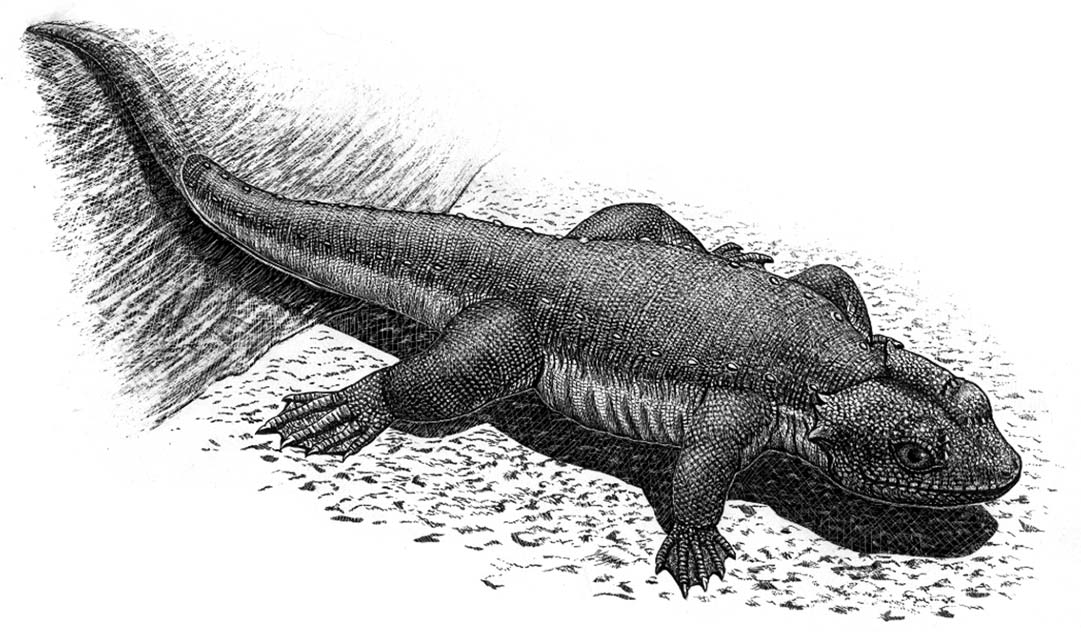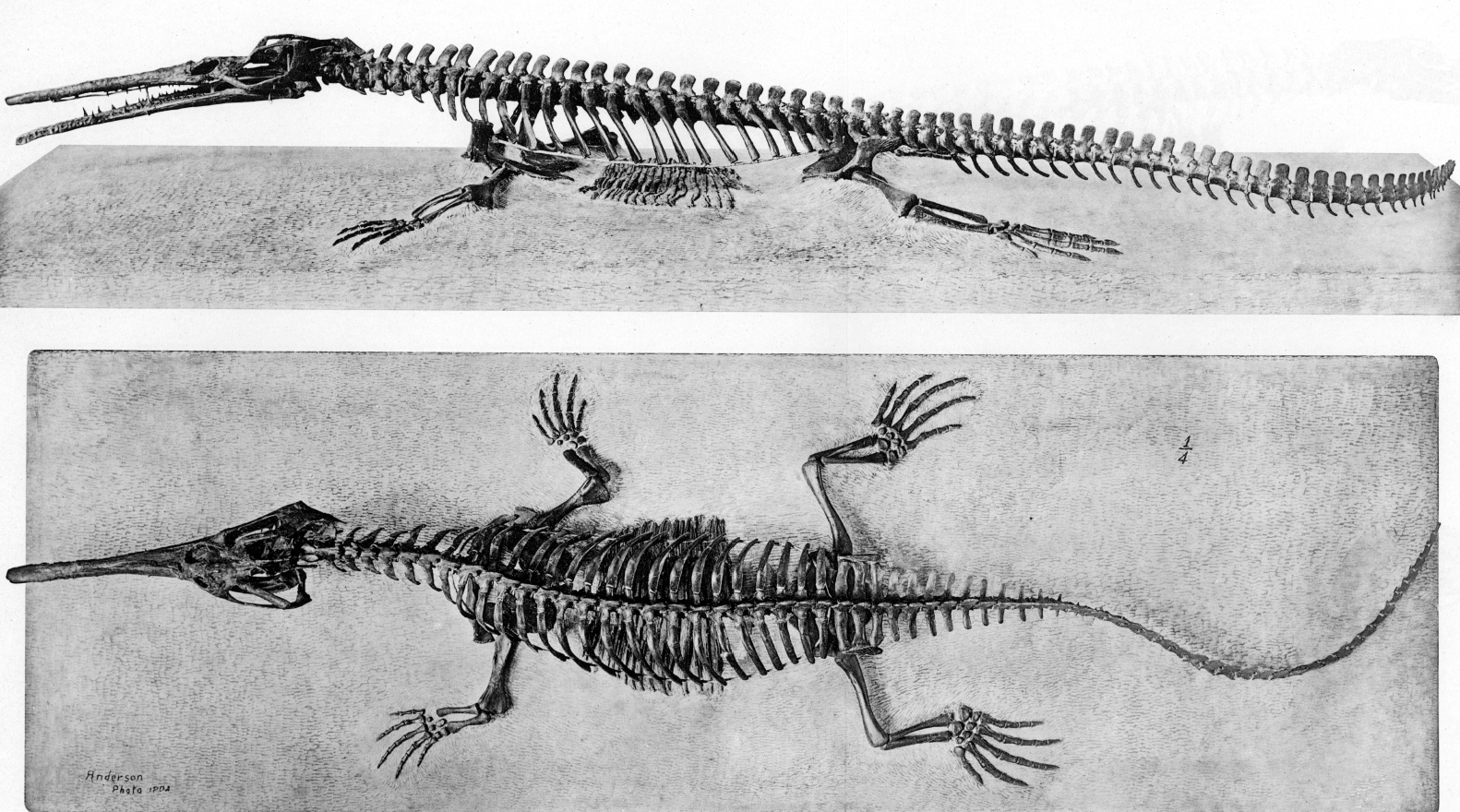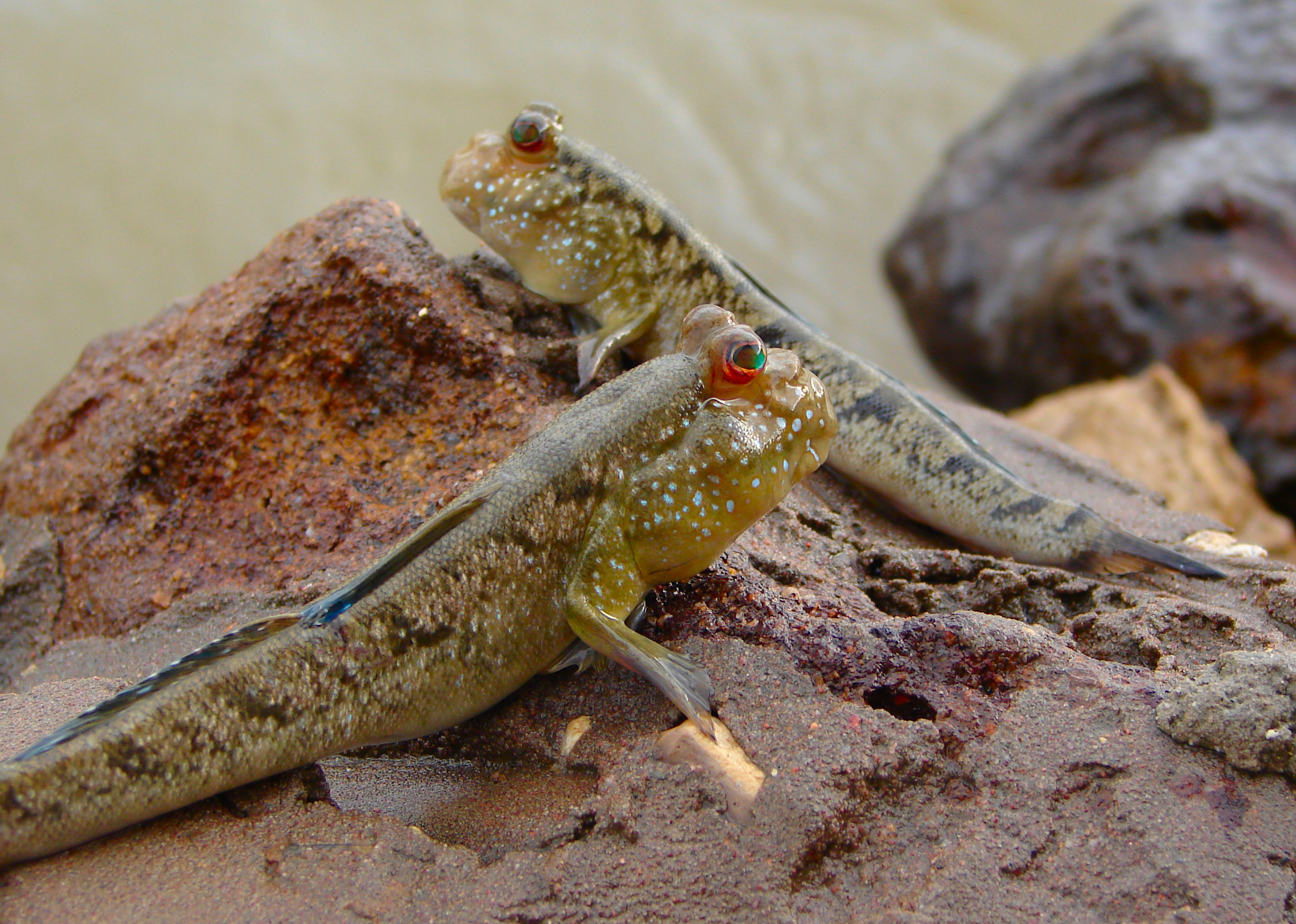|
Monjurosuchidae
Choristodera (from the Greek χωριστός ''chōristos'' + δέρη ''dérē'', 'separated neck') is an extinct order of semiaquatic diapsid reptiles that ranged from the Middle Jurassic, or possibly Triassic, to the late Miocene (168 to 11.6 million years ago). Choristoderes are morphologically diverse, with the best known members being the crocodile-like neochoristoderes such as ''Champsosaurus''. Other choristoderans had lizard-like or long necked morphologies. Choristoderes appear to have been confined to the Northern Hemisphere, having been found in North America, Asia, and Europe, and possibly also North Africa. Choristoderes are generally thought to be derived neodiapsids that are close relatives or members of Sauria. History of Discovery Choristodera was erected in 1876, originally as a suborder of Rhynchocephalia by Edward Drinker Cope to contain ''Champsosaurus,'' which was described from Late Cretaceous strata of Montana by Cope in the same paper. A year later ... [...More Info...] [...Related Items...] OR: [Wikipedia] [Google] [Baidu] |
Monjurosuchus
''Monjurosuchus'' is a genus of choristoderan reptile that lived in what is now China and Japan during the Early Cretaceous. It has large eyes, a rounded skull, robust legs with short claws, and a long, thin tail. Fossils have been found that preserve soft tissue, showing that it had soft skin and webbed feet. Description and history ''Monjurosuchus'' was first found in China as part of the Early Cretaceous Jehol Biota. Named in 1940, the type species ''M. splendens'' was the first reptile described from the Yixian Formation. The holotype specimen was lost during World War II but was replaced in 2000 by a recently discovered neotype preserving soft tissue. In 2007, remains were described from the Okurodani Formation of the Tetori Group of Japan. The Japanese material represents a different species of ''Monjurosuchus'' that has not yet been named. ''Monjurosuchus'' was a small choristodere, reaching a length of 40 cm with a 5 cm skull. Unlike related choristoderes, ' ... [...More Info...] [...Related Items...] OR: [Wikipedia] [Google] [Baidu] |
Philydrosaurus
''Philydrosaurus'' is an extinct genus of choristoderan which existed in China during the Early Cretaceous. The type species ''P. proseilus'' was named in 2005. ''Philydrosaurus'' was found from the Jiufotang Formation and is slightly younger than ''Monjurosuchus'', which was found from the Yixian Formation. Description Distinct ridges cover the prefrontal and postfrontal bones of the skull, distinguishing ''Philydrosaurus'' from related genera. The lower temporal fenestra, usually present as a hole in the back of the skull of choristoderes, is closed by bone in ''Philydrosaurus''. The eye sockets are large and spaced close together, similar to ''Monjurosuchus'' and ''Lazarussuchus''. ''Philydrosaurus'' is considered more basal than these choristoderes because its eyes are not as closely spaced and face laterally rather than dorsally. The skull is similar in shape to that of ''Cteniogenys'', the most basal choristodere. The shortness of the skull and the laterally facing eye soc ... [...More Info...] [...Related Items...] OR: [Wikipedia] [Google] [Baidu] |
Middle Jurassic
The Middle Jurassic is the second epoch of the Jurassic Period. It lasted from about 174.1 to 163.5 million years ago. Fossils of land-dwelling animals, such as dinosaurs, from the Middle Jurassic are relatively rare, but geological formations containing land animal fossils include the Forest Marble Formation in England, the Kilmaluag Formation in Scotland,British Geological Survey. 2011Stratigraphic framework for the Middle Jurassic strata of Great Britain and the adjoining continental shelf: research report RR/11/06 British Geological Survey, Keyworth, Nottingham. the Daohugou Beds in China, the Itat Formation in Russia, and the Isalo III Formation of western Madagascar. Paleogeography During the Middle Jurassic Epoch, Pangaea began to separate into Laurasia and Gondwana, and the Atlantic Ocean formed. Eastern Laurasia was tectonically active as the Cimmerian plate continued to collide with Laurasia's southern coast, completely closing the Paleo-Tethys Ocean. A subduction zone ... [...More Info...] [...Related Items...] OR: [Wikipedia] [Google] [Baidu] |
Champsosaurus
''Champsosaurus'' is an extinct genus of crocodile-like choristodere reptile, known from the Late Cretaceous and early Paleogene periods of North America and Europe (Campanian-Paleocene). The name ''Champsosaurus'' is thought to come from , () said in an Ancient Greek source to be an Egyptian word for "crocodiles", and , () Greek for "lizard". The morphology of ''Champsosaurus'' resembles that of gharials, with a long, elongated snout. It was native to freshwater environments where it likely preyed on fish, similar to living gharials. History of research ''Champsosaurus'' was the first member of the Choristodera to be described. ''Champsosaurus'' was named by Edward Drinker Cope in 1876, from isolated vertebrae found in Late Cretaceous strata of the Judith River Formation on the banks of the Judith River in Fergus County, Montana. Cope designated ''C. annectens'' as the type species rather than the first named ''C. profundus'' due to the larger number of vertebrae he attributed t ... [...More Info...] [...Related Items...] OR: [Wikipedia] [Google] [Baidu] |
Diapsid
Diapsids ("two arches") are a clade of sauropsids, distinguished from more primitive eureptiles by the presence of two holes, known as temporal fenestrae, in each side of their skulls. The group first appeared about three hundred million years ago during the late Carboniferous period. All diapsids other than the most primitive ones in the clade Araeoscelidia are sometimes placed into the clade Neodiapsida. The diapsids are extremely diverse, and include birds and all modern reptile groups, including turtles, which were historically thought to lie outside the group. Although some diapsids have lost either one hole (lizards), or both holes (snakes and turtles), or have a heavily restructured skull (modern birds), they are still classified as diapsids based on their ancestry. At least 17,084 species of diapsid animals are extant: 9,159 birds, and 7,925 snakes, lizards, tuatara, turtles, and crocodiles. Characteristics The name Diapsida means "two arches", and diapsids are tradition ... [...More Info...] [...Related Items...] OR: [Wikipedia] [Google] [Baidu] |
Semiaquatic
In biology, semiaquatic can refer to various types of animals that spend part of their time in water, or plants that naturally grow partially submerged in water. Examples are given below. Semiaquatic animals Semiaquatic animals include: * Vertebrates ** Amphibious fish; also several types of normally fully aquatic fish such as the grunion and plainfin midshipman that spawn in the intertidal zone ** Some amphibians such as newts and salamanders, and some frogs such as fire-bellied toads and wood frogs. ** Some reptiles such as crocodilians, turtles, water snakes and marine iguanas. ** Penguins. ** Some rodents such as beavers, muskrats and capybaras. **Some insectivorous mammals such as desmans, water shrews and platypuses. ** Some carnivoran mammals, including seals, polar bears and otters. ** Hippopotamuses. * Semiterrestrial echinoderms of the intertidal zone, such as the "cliff-clinging" sea urchin ''Colobocentrotus atratus'' and the starfish '' Pisaster ochraceus'' ... [...More Info...] [...Related Items...] OR: [Wikipedia] [Google] [Baidu] |
Order (biology)
Order ( la, wikt:ordo#Latin, ordo) is one of the eight major hierarchical taxonomic ranks in Linnaean taxonomy. It is classified between Family_(biology), family and Class_(biology), class. In biological classification, the order is a taxonomic rank used in the classification of organisms and recognized by the nomenclature codes. An immediately higher rank, superorder, is sometimes added directly above order, with suborder directly beneath order. An order can also be defined as a group of related families. What does and does not belong to each order is determined by a taxonomist, as is whether a particular order should be recognized at all. Often there is no exact agreement, with different taxonomists each taking a different position. There are no hard rules that a taxonomist needs to follow in describing or recognizing an order. Some taxa are accepted almost universally, while others are recognized only rarely. The name of an order is usually written with a capital letter. Fo ... [...More Info...] [...Related Items...] OR: [Wikipedia] [Google] [Baidu] |
Extinct
Extinction is the termination of a kind of organism or of a group of kinds (taxon), usually a species. The moment of extinction is generally considered to be the death of the last individual of the species, although the capacity to breed and recover may have been lost before this point. Because a species' potential range may be very large, determining this moment is difficult, and is usually done retrospectively. This difficulty leads to phenomena such as Lazarus taxa, where a species presumed extinct abruptly "reappears" (typically in the fossil record) after a period of apparent absence. More than 99% of all species that ever lived on Earth, amounting to over five billion species, are estimated to have died out. It is estimated that there are currently around 8.7 million species of eukaryote globally, and possibly many times more if microorganisms, like bacteria, are included. Notable extinct animal species include non-avian dinosaurs, saber-toothed cats, dodos, m ... [...More Info...] [...Related Items...] OR: [Wikipedia] [Google] [Baidu] |
Ancient Greek
Ancient Greek includes the forms of the Greek language used in ancient Greece and the ancient world from around 1500 BC to 300 BC. It is often roughly divided into the following periods: Mycenaean Greek (), Dark Ages (), the Archaic period (), and the Classical period (). Ancient Greek was the language of Homer and of fifth-century Athenian historians, playwrights, and philosophers. It has contributed many words to English vocabulary and has been a standard subject of study in educational institutions of the Western world since the Renaissance. This article primarily contains information about the Epic and Classical periods of the language. From the Hellenistic period (), Ancient Greek was followed by Koine Greek, which is regarded as a separate historical stage, although its earliest form closely resembles Attic Greek and its latest form approaches Medieval Greek. There were several regional dialects of Ancient Greek, of which Attic Greek developed into Koine. Dia ... [...More Info...] [...Related Items...] OR: [Wikipedia] [Google] [Baidu] |
Tchoiria
''Tchoiria'' is a genus of simoedosaurid choristodere, a type of crocodile-like aquatic reptile. Fossils of this genus have been found in Early Cretaceous-age rocks in Mongolia. Four species have been named, but two have been given their own genera. The type species is ''T. namsari'', based on PIN 3386/1, a partial skull and skeleton discovered in the Aptian-age Lower Cretaceous Hühteeg Formation at Hüren Dukh, central Mongolia Mongolia; Mongolian script: , , ; lit. "Mongol Nation" or "State of Mongolia" () is a landlocked country in East Asia, bordered by Russia to the north and China to the south. It covers an area of , with a population of just 3.3 million, .... Two other species were named from this locality, with both later being reassigned: ''T. egloni'', now '' Irenosaurus egloni''; and ''T. magnus'', now '' Ikechosaurus magnus''. A fourth species, ''T. klauseni'', was named from a partial skull and skeleton found in rocks of roughly the same age ... [...More Info...] [...Related Items...] OR: [Wikipedia] [Google] [Baidu] |






.jpg)
